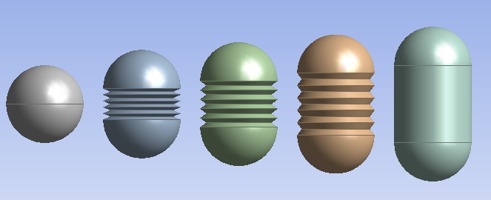This method presents a buoyancy control mechanism for lighter-than-air (LTA) systems, such as airships or balloons, enabling active and precise altitude control. The system integrates a plurality of baffles within the main envelope, which can expand or retract to vary the envelope’s volume. These changes are achieved by adjusting each baffle’s angle via a pulley and string mechanism controlled by a central controller. This modulation of volume directly alters the buoyant force, allowing the LTA system to ascend or descend without additional storage space or significant weight penalty. The mechanism is compact, minimizes aerodynamic disturbances, and offers a broader altitude control range compared to traditional methods like ballonets or gas heating.
Conventional altitude control methods in lighter-than-air (LTA) systems-such as ballonets, heating, or liquified gas storage-offer limited altitude range and require additional components that increase system weight and complexity. Advanced methods involving multiple envelopes or mechanical systems further complicate design and impair aerodynamic performance. These constraints hinder effective altitude control, particularly in atmospheric exploration missions. There is, therefore, a need for an actively controllable, lightweight, and easily integrable buoyancy control mechanism that enables a wider range of altitude control without adding significant weight, requiring extra storage space, or introducing aerodynamic disturbances to the LTA system.
- Integrated Variable-Volume Baffles: Internal baffles embedded within the envelope dynamically expand or retract to vary the envelope's volume, directly controlling buoyancy without relying on gas release or heating.
- Precise Baffle Angle Modulation: Each baffle forms a controllable angle with the envelope’s longitudinal axis, allowing fine-tuned adjustments to envelope volume for accurate altitude control.
- Pulley-Driven Internal Actuation System: A lightweight, embedded pulley mechanism is actuated by a controller manipulates strings connected to the baffles, offering reliable and efficient mechanical control from within.
- Hybrid Active–Passive Retraction Design: It combines active control through motors and passive assistance via a gravity-based suspension system, enhancing efficiency and reducing power consumption.
- Aerodynamic and Structural Integration: The entire mechanism is integrated internally, preserving the LTA system’s external aerodynamic profile and eliminating the need for additional storage tanks or structures.
- Material Compatibility and Lightweight Construction: The baffles and envelope are made from the same or compatible lightweight materials (e.g., metalized polymers, nanoclay-coated fabric), ensuring seamless integration without structural or weight penalties.
- Unique, Gas-Free Altitude Control with Extended Range: Unlike traditional systems, this invention achieves a significantly wider altitude control range without using additional lifting gas, external ballonets, or heat-based mechanisms-marking a unique advancement in LTA technology.
The prototype lighter-than-air (LTA) system includes an envelope with multiple integrated baffles made from the same material as the envelope, such as metalized polymers or coated fabrics. These baffles can change their angle to expand or retract, actively varying the envelope’s volume and controlling the system’s buoyancy and altitude. A pulley mechanism inside the envelope is connected to control strings attached to the baffles, which are operated by motors controlled by a central controller. Increasing the baffle angles expands the envelope volume, increasing buoyant force and causing the system to rise, while decreasing the angles reduces volume and allows descent. The system also features a gravity-assisted suspension mechanism that helps lower the altitude by reducing baffle angles. This design achieves a wide range of altitude control without adding significant weight or requiring extra storage space and minimizes aerodynamic disturbances, making it an efficient, integrated buoyancy control solution for LTA systems.
Laboratory scale 'Proof of Development' studies are underway for the technology.
3
The invention enables precise, lightweight altitude control in LTA systems, improving climate monitoring, disaster response, and remote connectivity. Its simple, integrable design lowers costs and complexity, making it suitable for use in underserved areas and educational research. By enhancing efficiency without adding weight or storage needs, it supports sustainable operations and broadens access to aerial technologies for environmental, scientific, and humanitarian applications.
- Atmospheric research
- Disaster monitoring and relief
- Environmental monitoring
Geography of IP
Type of IP
202221063294
543519

